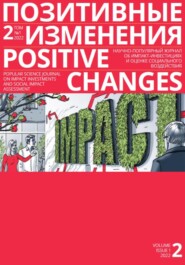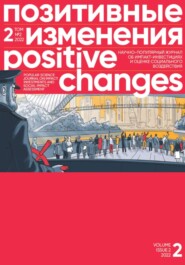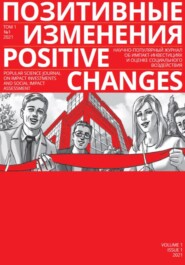По всем вопросам обращайтесь на: info@litportal.ru
(©) 2003-2025.
✖
Позитивные изменения. Города будущего. Тематический выпуск, 2022 / Positive changes. The cities of the future. Special issue, 2022
Настройки чтения
Размер шрифта
Высота строк
Поля
In 2022, Norman Foster is launching a UN declaration of the principles for sustainable and inclusive urban design and architecture, that would be the equivalent of the Hippocratic Oath for architects. The document called the San Marino Declaration includes the following principles of urban planning:
• people-centrality, social responsibility and inclusivity;
• cultural identity, values, and heritage;
• resource efficiency and circularity;
• safety and health;
• respect for nature and natural systems and processes;
• people-smartness;
• inter-disciplinary cooperation and networking, engagement[26 - UNECE. (2022). San Marino Declaration Revised and Adopted. Retrieved from: https://unece.org/ hlm/documents/2022/10/san-marino-declaration-revised-and-adopted. (accessed 01.11.2022).].
THINKING ABOUT THE FUTURE FROM THE FUTURE ITSELF
Going beyond the boundaries of urban planning concepts, it is important to note at least two other authors – Benjamin H. Bratton, head of his own Terraforming research program, and Nick Srnicek, political philosopher of the accelerationist movement.
Bratton’s book includes a quote by writer and director Chris Marker: "The naive American contemplates the sky; the Russian … settles in the sky and contemplates the earth." According to Benjamin H. Bratton, it suggests an analogy about the need to think about the future from the future itself rather than the present. This book focuses on the millennial event horizon, and it also addresses themes echoing the motif of non-extractive architecture: how to terraform[27 - Terraforming (from Latin terra – earth and forma – shape) is the process of deliberately modifying the atmosphere, temperature, surface topography or ecology of a planet, moon, or other body to be similar to the environment of Earth to make it habitable for Earth animals and plants to live on. Today this task is mainly of hypothetical interest, but one day it may actually be developed in practice.] the Earth so that it becomes habitable for human life and remains so for as long as possible, while avoiding projects with a negative effect.
Nick Srnicek describes the future as a radical acceleration of technological labor substitution through innovation and the introduction of an unconditional basic income. The humans are seen as creative individuals, and the cities as a platform for innovation.
THE RUSSIAN APPROACHES TO INTEGRATED TERRITORIAL DEVELOPMENT
The pioneers of integrated territorial development in Russia were Territorial Development Agencies (TDA) – the first wave of the ITD boom began with them in 2001–2005. According to the government’s plan, the TDAs were to take on the most difficult work of coordinating the activities of landlords and tenants in large areas. It was, first of all, the coordination of urban planning issues and engineering support. As a result, each territory would have a single management, transport, engineering and architectural concept.
The reason why the TDAs failed was that they were too far ahead of their time: neither the legislation, nor the resource base or the financial system were prepared for their successful implementation – the real estate market was yet to reach a new quality level. The main problem was that, in fact, the TDAs never received any effective leverage over the owners of land plots or any real authority. The city administration at the time also did not have the resources or the desire to deal with these clearly challenging tasks.
Integrated territorial development projects of the second wave (2005–2008) were often announced on agricultural land purchased by developers (greenfield development). The scale of hundreds of hectares and several million square meters of residential and commercial real estate was astounding. Even in a growing market, many of these projects looked overly optimistic in terms of timing and opportunities for the market to absorb such volumes. The issues of utilities and infrastructure were barely sketched out in such projects.
By 2008, literally every Russian region felt obliged to present an integrated territorial development project. Most of these were announced by private developers or partnerships. As part of these projects, the developer was to prepare urban planning documents, prepare the territory from the engineering point of view, to provide road infrastructure, and then build up on its own or invite other investors to build.
Identity research and development are becoming part and parcel of integrated territorial development. Urban identity is built on a sense of belonging to a place and an urban community.
According to the Presidential Decree "On the national development goals of the Russian Federation until 2030," it is necessary to ensure the annual commissioning of 120 million square meters of housing by 2030. What this housing will look like will determine the image of the Russian cities in the future. The Integrated Territorial Development Standard was developed by the Russian Ministry of Construction and DOM.RF together with Strelka KB by order of the Russian Prime Minister. The principles of the standard include[28 - DOM.RF. The standard of comprehensive development. Retrieved from: https://www.xn-d1aqf.xn-p1ai/urban/standards/printsipy-kompleksnogo-razvitiya-territoriy/. (accessed 02.11.2022).]:
• Functional diversity. Developing districts with extensive street retail, combining residential, office and service functions;
• Compact and dense development. Takes into account the human scale through medium-rise buildings and plenty of open spaces;
• Health and Safety. Reduced traffic, high air quality and the ability to spend leisure time in public spaces all year round;
• Comfort of movement. A variety of routes and a balance between different types of travel, efficient public transport;
• Flexibility and autonomy. Variation in the use of buildings and land through structural planning solutions;
• Comfortable housing. A variety of layouts and types of living environments, along with high-quality common areas as an incentive for residents to jointly manage the house and surrounding territory.
Currently, more and more developers in Russia are moving away from the reproduction of Soviet-style precast-concrete neighborhoods. Developers are starting to use new urban planning approaches and standards, which meet the public’s modern demands and take into account changes in the social, political, economic, cultural and informational spheres. Increasingly often one can meet the desire to search for new, people-oriented pilot solutions and concepts, opposed to the vector of developing territories in the interests of production or administrative and economic logistics. It is important to consider the strengthening of agglomeration as an important concept of spatial planning in Russia. The legal status of agglomeration is rising, becoming more significant than the municipalities and regions and effectively starting to determine the development direction and format of their territories for the coming years.
THE CITY AS A COMMUNITY
LOCAL IDENTITY
As mentioned above, identity research and development are becoming part and parcel of integrated territorial development. A city is a function of identity that its inhabitants experience through a sense of belonging to a place. An urban place has its own boundaries and content, and its own ideas about the events that can take place within them. This identity is formed through the people’s social actions: from social contacts with their neighbors to the representation of the city’s cultural image (Nikolaeva, 2021).
Urban identity is built on a sense of belonging to a place and an urban community (Tweed & Sutherland, 2007). The city is not just physical, but also social space. Infrastructure produces a space for social action. The culture and identity of the city of today includes cross-generational responsibility, sustainable development and conscious consumption practices, as well as a separate focus on the temporal aspect of living (the infrastructure concept of the 15-minute city discussed above) (Nikolaeva, 2021).
FROM THE CITY TO THE COMMUNITY: THE ROLE OF THE THIRD PLACE
The city and urban communities can be understood differently depending on the observer’s viewpoint[29 - The Sociology of Urban Communities. (2019). Part 9. About the concept of urban community. Retrieved from: https://youtu.be/FxmoVaPEjcI. (accessed 11.10.2022).]. This can be a position in which the city is perceived as a place for the residents to earn money and where the resident has nothing but a home and a job. The future city then serves to minimize the time that individuals spend on something other than making money. A different logic states that the city should and can create an urban community as a space for communication, equality and cross-cultural connections. In this concept, the "third place" becomes the focal point of the city.
The city can create community opportunities through appropriate infrastructure. Ray Oldenburg, author of The Third Place, describes such infrastructure as a neutral area where the urban community can spend time together. According to the author, "third places" play an important role in the development of neighborhood relations: "Many, if not most, neighbors will never meet, let alone have a relationship, because they have no place for that." (Oldenburg, 2018).
The city is a concept of modernity; it is created by a separate urban class of inhabitants. This urban class did not immediately discover itself and the place where it would gather. The coffee houses were the first public spaces where middle class could gather to communicate. This communication is believed to be the basis for the emergence of the civil society in Europe, an autonomous cultural sphere within which innovations take place (Pincus, 1995).
A special kind of infrastructure for creating points of social activity – so-called "social infrastructure" – is becoming a separate subject of research in geography and urban planning (Latham & Layton, 2019). The modern view of libraries, neighborhood centers, public spaces, laundromats, cafes, and sports recreation grounds is that they not only perform their specific functions and produce added value, but also have a "socialization" effect.
The approach of social infrastructure developed primarily with the consideration and participation of the local residents and urban communities, is that the social life unfolds for the most part in physical space, which can be studied and designed to match the development strategy of each community.
COMMUNITY TO CITY: PARTICIPATORY PRACTICES IN URBAN DESIGN
One of the new norms of urban development is the principle of community involvement in the development of the area, starting with "participatory design." Back in 2016, Project Group 8, together with Strelka KB, published a brochure[30 - Strelka KB, Project Group 8, the Mono-cities Development Foundation. Involvement of the Public in Beautification Projects. Methodological recommendations on project implementation to improve the quality of the environment in singleindustry towns. Retrieved from: https://dr-urban.ru/articles/participation. (accessed 02.11.2022).] on public engagement practices in beautification projects. They mainly focus on the design of public spaces and interaction within the boundaries of the "business-authorities-society" triangle. The researchers distinguish a broad range of actors, each with their own interests and roles in the project: economic agents, political, experts, residents, users of the territory, citizens, the town-forming enterprise. Interestingly, public organizations and initiative groups have recently become key actors in participatory design. In particular, in 2022 the Russian Ministry of Construction published a methodological guidebook "Best Practices of Volunteer and Youth Associations in Territorial Development."
In the article "Participatory Design: Peculiarities of the Approach in Russia," experts Nadezhda Snegireva, Konstantin Kiyanenko, Yulia Bychkova, and Peter Ivanov note that existing practices of co-participation are limited in use, although they have a high potential in urban management, budgeting, and cultural systems. Because of this limited use, these practices ran into an obstacle – trying to integrate them into the vertical structures of state administration was ineffective. Another important issue is long-term co-participation: the participant must acquire subjectivity and responsibility that go beyond mere participation in the vote and extend to the future living scenarios of the local residents, so that the infrastructure developed continues to perform its social functions and "lives" beyond the construction period (Vereshchagina, 2021).
The general participatory development platform supports the main thesis: speaking of the city of the future, it is necessary to consider not just the design of beautification projects, but the broader context of community participation in all aspects of city governance. It is of a permanent nature, and also includes broader context of the items for which a collective decision is made. Participatory governance means that it is based on three key elements (Perezolova, 2018):
• civic participation;
• public discussions;
• empowerment of the public in governance.
Decision-making in this framework takes place after discussions with residents themselves, and with extensive accountability and feedback practices. Public participation in decision-making is presented as a pedagogical practice and serves to foster the values of self-governance, consociation, and responsibility for the common good.
Practices of public discussion of urban development projects are one of the key methods of engaging the public in governance, which can be accomplished, among other things, through participatory modeling to collectively address public problems. Modeling consists of the following stages: informing, public hearings, focus groups, opinion polls.
Interestingly, the wording "participatory modeling is a method of analyzing a problem by building a causal model with the involvement of stakeholders" clearly evokes associations with the theory of change, which similarly includes a causal model taking into account the interests of all parties involved and is used to implement socio-economic impact assessment on extended change projects (including cities of the future).
The greatest opportunities for public engagement in decision-making exist where the decisions directly and explicitly affect the lives of the people, and the consequences of said decisions are most obvious, that is, the threshold of expertise is relatively low. This area of government decision-making is commonly referred to as local governance. A key factor in the success and autonomy of local governance is access to the development of the local budget.
Thus, in addition to participatory modeling, participatory (initiative) budgeting is a key tool for public engagement in city governance.
Within the framework of the project of the Ministry of Finance of Russia and the World Bank to develop initiative budgeting in Russia, reviews of international best practices were collected. Practices of initiative budgeting in small towns form an important part of the reviews (Khachatryan et al., 2020).
It seems that the city of the future, respecting the concept of the 15-minute city, will be a small one. This type of city has the following positive features:









